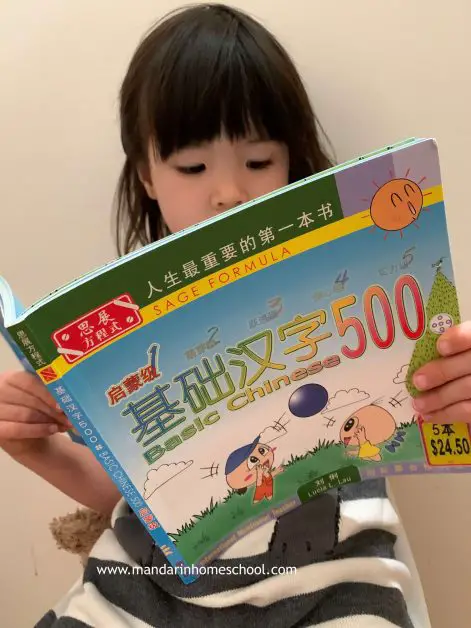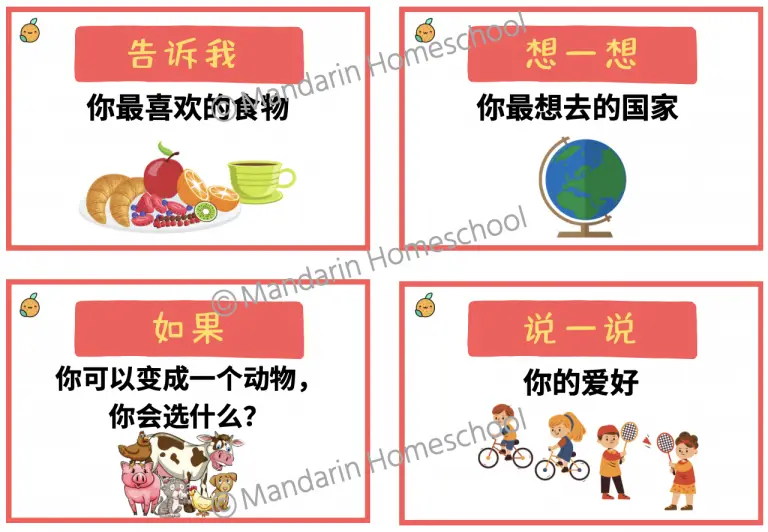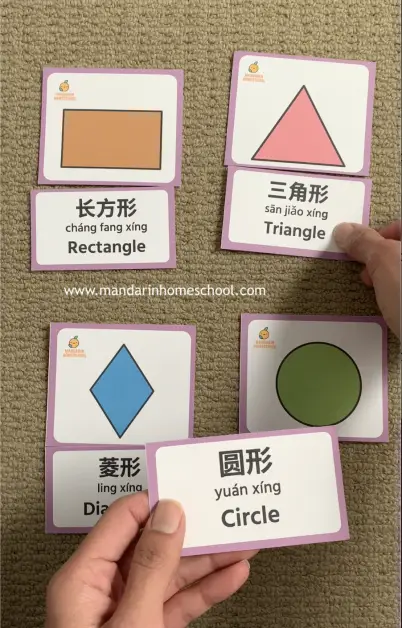In its essence, all language acquisition can be broken down into
- Listening
- Speaking
- Reading
- Writing
These are the four fundamental pillars of learning in Mandarin Chinese, 听说读写.
Personally, I think the most most MOST important thing when you teach your child anything, is to create motivation. So begin by building an interest in the language. Expose them to Mandarin books, songs, rhymes, shows etc.
Build up a library of Chinese books, read Chinese books to your children frequently, watch Chinese videos together, create opportunities to listen/speak Chinese, and don’t be afraid to experiment new ways of learning!!
Mandarin Homeschool is reader supported. Please note that when you click on the links in this post, we may earn commissions for purchases made, at no cost to you. Thank you.
Listening to Mandarin Chinese
The first thing you should do as you embark on a new language journey is to ensure that your child will get ample exposure to the language. Experts say you need 30% daily exposure to a language before you will acquire it. So if you are a native Chinese speaker, start speaking to your child in Chinese. Don’t mind the stares from that nosy stranger, they’re probably envious that you know a different language. (Multilingualism is a super power!) If you are not a native Chinese speaker, then I suggest you hire someone who is. There are many affordable online options for a (cheap) Chinese tutor.
Other things you can and should do
- Listen to Chinese music, nursery rhymes, Chinese story podcasts. This was how my toddlers picked up Chinese quickly in the early days, sing along and invent new songs. They loved learning to sing Mandarin songs, and nursery rhymes.
- Watch Chinese shows
- Read Chinese books to your children daily
Speaking Mandarin Chinese
Don’t stress if your child doesn’t pronounce their words right, or write them accurately in the proper stroke order. If you drill them too much, you will lose their interest, and have lost half the battle. Learning should always be fun!
In my Mandarin homeschool, after ample listening and auditory exposure to Mandarin Chinese, the next focus is on speaking. If possible, speak only Mandarin to your children at home. That way, they have no choice but to use Mandarin if they want a cookie (intrinsic motivation!). And because little people love to talk, you get lots of repetition and practise everyday.
If your children replies in his/her first language, don’t penalise them, or insist that they speak in Mandarin Chinese to you. Instead, pretend you don’t understand! And request that they use Mandarin Chinese. At the very beginning, you may have to model the responses for them. This can help them to copy and pick up the right way of speaking Chinese.
When my children were more fluent, I made conversation starter cards for the purpose of getting my children and I to start talking about different topics in Mandarin Chinese. It was a really fun way to interact and find out more about them at the same time.
Reading Mandarin Chinese
Read a lot of Mandarin books. Read at least one DAILY. Reading is not only a great way to bond with your children, but also creates a lifelong positive habit. Do take the time to read and discuss the story with your children, allow them to partake in the story telling/re-telling process and go deeper into the stories.
In the beginning, you should read books on the children’s area of interest, and NOT focus on getting them to read to you. Reading fluently requires intrinsic interest and by setting reading tasks for them, you may create more tension and reluctance, especially if this is a second language for your children. Slowly introduce Chinese levelled readers once they have warmed to the idea of learning a new language. Some of our favourite readers are Sage Books, Odonata, Rainbow Dragon, First Chinese Readers…

You can learn to read Mandarin Chinese characters through the actual characters or pinyin/zhuyin (pronunciation aids), or both. I recommend learning the characters as they are more practical as not all Mandarin books have pinyin/zhuyin. Furthermore, while it takes more effort at the beginning, if you have a good understanding of Chinese characters (strokes), it will help you in the acquisition of new words.
I cheat by having Chinese posters on the wall ALL THE TIME! They can’t help but look and read it. Sometimes, they come up to me to ask what the Chinese characters are.
For active teaching of Mandarin Chinese vocabulary, I use flashcards to work on their receptive and expressive language. For my three children, this allows me to cater to their personal learning level in the same lesson. So my oldest could be doing copy-writing with his flashcards while my youngest is doing matching.
Writing Mandarin Chinese
With writing of Chinese characters, know that Chinese is a notoriously hard language to write because of its ideographic background. The proper way of writing Chinese characters is to learn the strokes and stroke order. This is going to take time to get correct. Depending on how well you want your child to write, you can get stuck in this stage. I am a strong believer that writing reinforces the reading process so at the age of 3 years old, all my children had learnt to trace Chinese strokes. When you write, the kinesthetic feedback to your brain reinforces what you are learning, and it has been proven that writing on paper can activate more parts of your brain i.e. better learning! Reading and writing share an intricate intertwined relationship and while it may seem easier to teach reading, and then writing. In actual fact, you should be doing both in conjunction.
And yes, while writing in Chinese language is hard, there are fun ways to do it too!
How do you frame your Mandarin homeschooling? Do you start off with listening too? Is writing a struggle for you?
Please share with me and our readers how your personal homeschooling journey has been!




